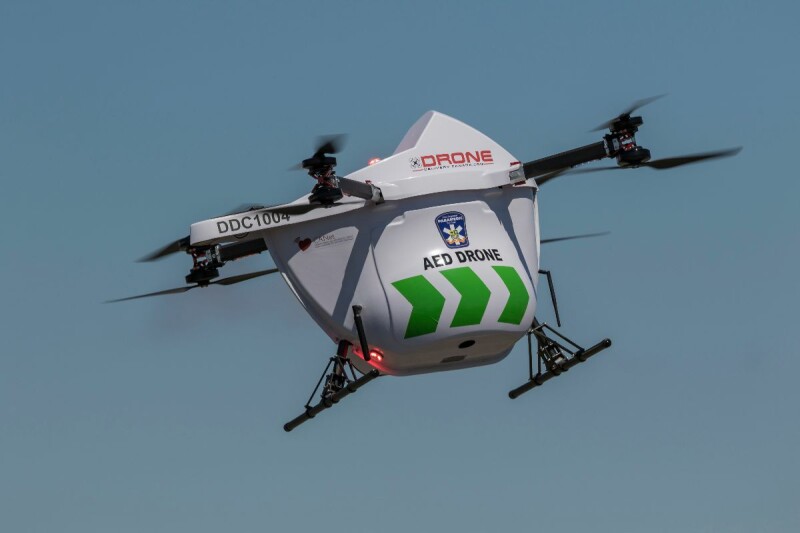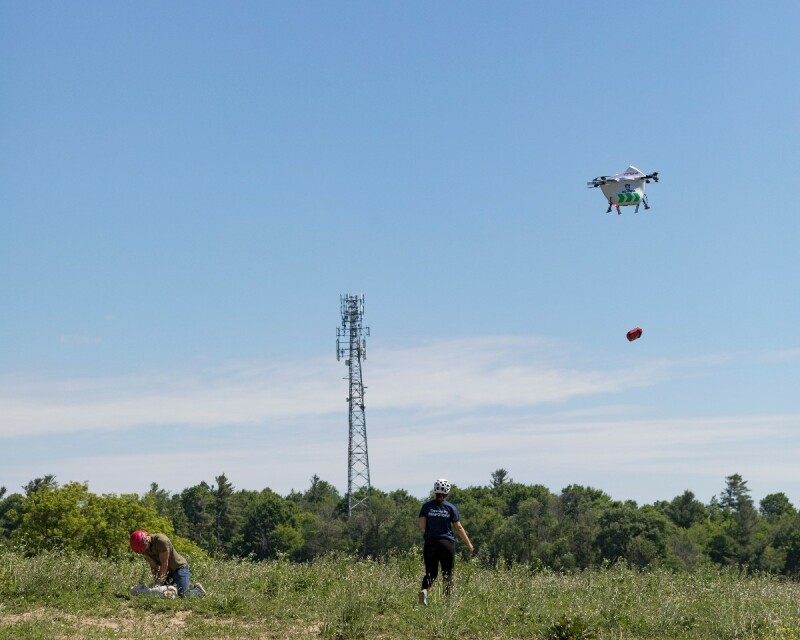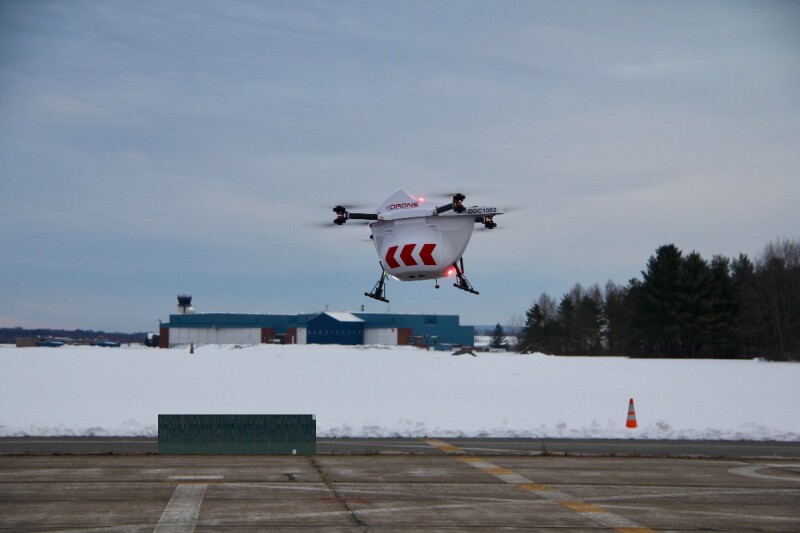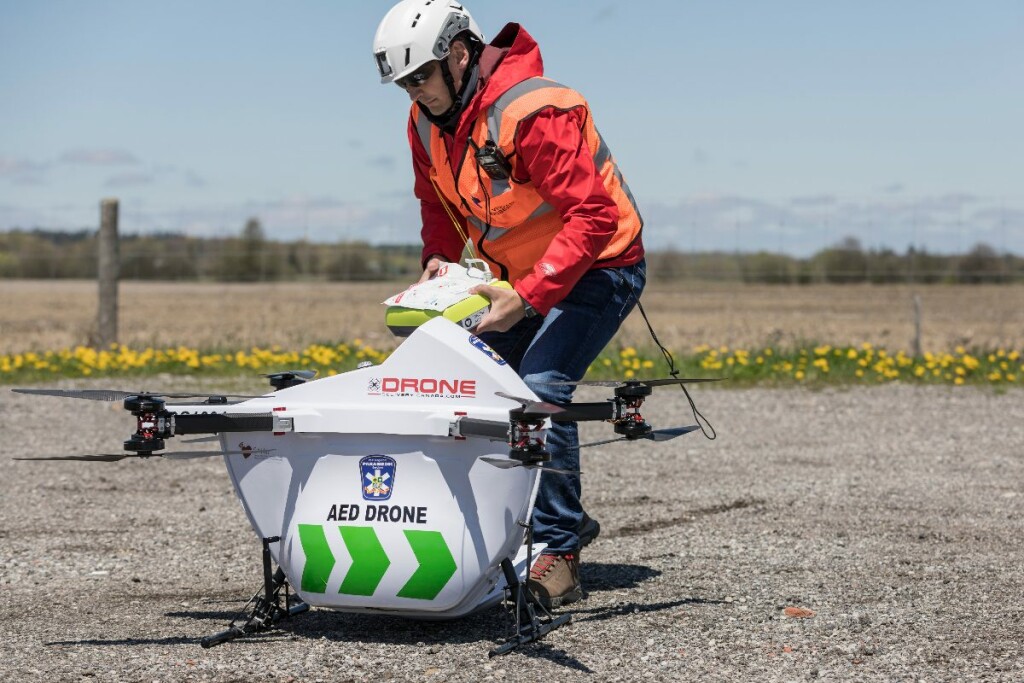Over the past six years we’ve been writing about the promise of regular unmanned flights, not only to deliver goods but also deliver people. Well, here we are in 2021 and still writing about it as a promise and not a reality. Almost every day brings news of new tests, new technologies and new waivers and exceptions that allow certain vehicles to perform certain functions within a narrow set of circumstances and under heavy supervision and scrutiny, but the light at the end of the mainstream tunnel is still dim and far away.
Last week we saw a ray of hope on the announcement that Drone Delivery Canada (DDC) had signed an agreement with the University of British Columbia (UBC) to deploy DDC’s patented drone delivery solution to Stellat’en First Nation, for UBC’s “Remote Communities Drone Transport Initiative” program.
 Why do we call this announcement a ray of hope? Simply because this is not another technology evaluation or a test, this is a commercial arrangement to allow DDC to supply much-needed pandemic relief supplies to a remote community in Northern Canada. We reached out to DDC for an exclusive conversation with its President & CEO, Michael Zahra, who gave us a valuable insight into the agreement.
Why do we call this announcement a ray of hope? Simply because this is not another technology evaluation or a test, this is a commercial arrangement to allow DDC to supply much-needed pandemic relief supplies to a remote community in Northern Canada. We reached out to DDC for an exclusive conversation with its President & CEO, Michael Zahra, who gave us a valuable insight into the agreement.
“Our technology has been designed with one purpose, to deliver goods as efficiently and cost-effectively as possible,” said Zahra with conviction. “UBC was looking for a partner that would be able to supply a remote community with medical supplies to combat the devastating effects of the Covid-19 pandemic on a remote community. We offered our solution, using our Sparrow delivery drone, and the match perfectly suited the needs of the mission.”
Drone Delivery Canada currently produces three models, specifically designed and manufactured to satisfy different needs.
- Sparrow. Useful load of 4.5 Kg (10 lbs) with a range of 30 Kms (18.6 miles)
- Robin XL. Useful load of 11.5 Kg (25 lbs) with a range of 60 Kms (37.3 miles)
- Useful load of 180 Kg (397 lbs) with a range of 200 Kms (124.3 miles)
“Even though we design and assemble our drones in house, we don’t consider ourselves as simply a drone manufacturing company,” continued Zahra. “We think of DDC as a managed services company in the fact that we supply our customers with a turnkey system that effectively allows them to perform their mission seamlessly.”
Delivering medical supplies using unmanned aerial vehicles (UAVs) involves much more than simply having an aircraft capable of holding a certain amount of cargo while flying a certain route, so we asked Zahra to provide more details about his plans to offer a repeatable solution.
“Our commercial operating model involves depot-to-depot flights on pre-determined routes with the required depot infrastructure in place,” explained Zahra. “We call these depots DroneSpots®, and it means that drones operate autonomously while our proprietary FLYTE software monitors air traffic, weather, aircraft, and other elements along the way. With safety at the forefront of all operations, our drone logistics system is designed with multiple redundancies and all flights are overseen from our Operations Control Centre in Toronto, Canada – monitored 24/7.”

When discussing the issues of coexistence with manned aircraft over the Canadian airspace, Zahra explained the nature of the skies around the area to be served by his technology.
“There are a couple of aerodromes around the Fraser Lake area, so I wouldn’t assume it’s not a crowded airspace just because it’s isolated,” said Zahra. “What we have developed is a series of steps to ensure we can do these deliveries safely and in a timely manner. We have adopted a crawl-walk-run model in which we will initially have local staff observing the flights, and eventually we will migrate to a beyond-line-of-sight mode. All fights will be conducted under 400 ft and in accordance with regulations.”
The regulations in Canada are similar to the US, and Transport Canada (TCCA) has strict enforcement policies when it comes to operations of UAVs in controlled airspace.
“We have Compliant Operator status from TCCA and that allows us to operate without the need to apply for specific projects, as long as we comply with all regulations and safety procedures,” stated Zahra. “We will establish well-defined DroneSpots locations at both ends of the proposed route and then will begin regular flights to the benefit of UBC and the Community.”

When the discussion turned to the expected timetable for final deployment, Zahra was clear on the plan.
“We will have an initial site visit in the next few weeks and then we will aim at having regular flights in about two months,” Zahra said. “The short term goal is to have flights to aid in the fight against the pandemic, but in the long term, UBC would like to consider introducing UAVs to First Nation Communities as part of a larger solution.”
The Drone Delivery Canada alliance with the Stellat’en First Nation and the University of British Columbia is not just another test, but a solid plan to help communities with real needs in real time. Kudos to all involved for advancing the cause of unmanned deliveries.















Comments